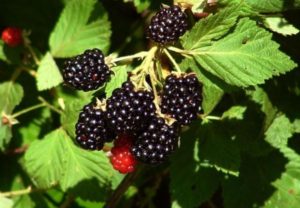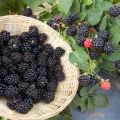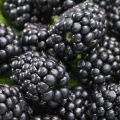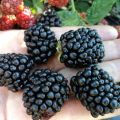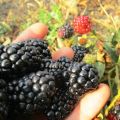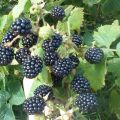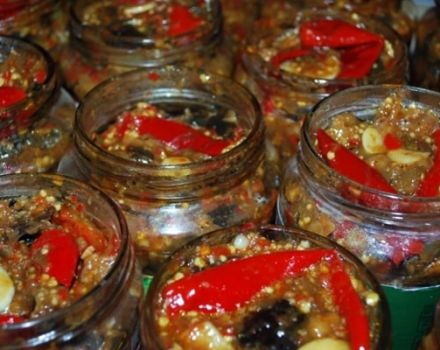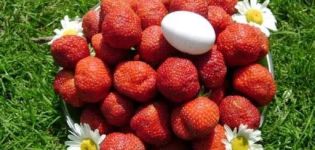Description and characteristics of the Loch Tay blackberry variety, planting and care
A perennial from the Pink family is cultivated in Europe, and is grown on an industrial scale in the USA and Canada. In a relatively short time, dozens of blackberry varieties were created - erect and weaving, with and without thorns. Shrub berries are rich in antioxidants and vitamins, and have a surprising combination of acidity and sweetness. Scientists managed to embody the best technical characteristics and taste in the Loch Tei blackberry. It bears fruit in southern latitudes, pleases with a high yield in a harsh climate, grows in large areas and in summer cottages.
History of Blackberry Breeding Loch Tei
A hybrid that lacks thorns on the shoots was created by pollination of Logan berries and raspberries growing in Europe. Breeders from Scotland carefully selected blackberries for crossing, the Loch Tay variety they developed received excellent taste and decorative appearance. The half-growing shrub was brought to Russia in 2011, and it immediately attracted the attention of summer residents not only in the southern regions, but also gardeners from the regions of the middle lane.
Blackberries Elktey or Lochtey, as some call them, are resistant to low temperatures and the berries ripen quickly. The shrub has powerful roots in which substances accumulate, which protect the plant from viruses and fungi.
Varietal features
The hybrid obtained as a result of cross-pollination is characterized by an early ripening period, unpretentious care. The Loch Tei blackberry is immune to diseases and pests, tolerates severe frosts, drought, and heat over 40, is adapted to different climatic conditions, bears fruit both in the south and in the north.
The advantages and disadvantages of culture
Thanks to the careful selection of varieties for breeding, the Loch Tay hybrid received a lot of advantages, one of which is high yield.
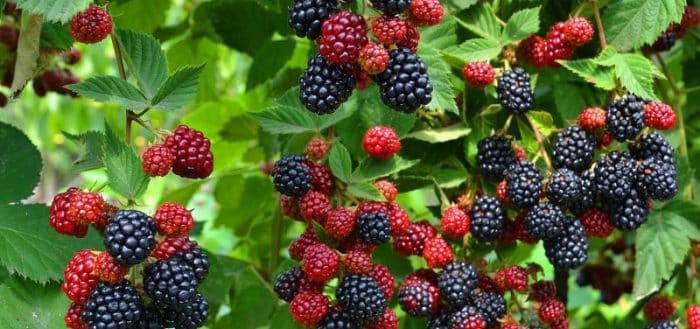
The benefits of ultra-early blackberries include:
- immunity to disease;
- adaptation to adverse conditions;
- great taste of berries;
- long-term storage.
There are no thorns on the shoots of the plant, making it difficult to care for it. Sweet fruits do not lose their presentation during long-distance transportation. They contain a lot of ascorbic and niacin, B vitamins.
The varieties and disadvantages are noticed.The shoots of the Loch Tei perennial grow rapidly, the blackberries, spreading over the site, drown out other crops.
Leaves and stems must be sprayed with copper-based preparations, as it is affected by rust. The berries ripen early, but fruiting ends by July.
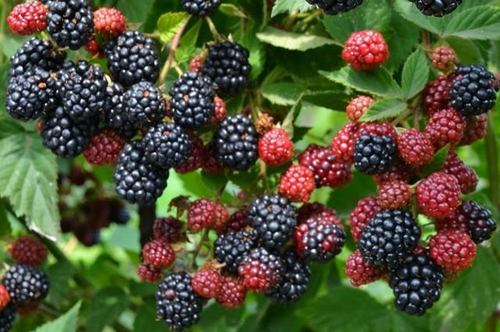
External description of the bush
Blackberry Loch Tei is a semi-herbaceous plant, the length of shoots of which exceeds 4 meters, on smooth stems of light brown color there are no thorns at all. From the central part of the bush, branches covered with emerald leaves with denticles along the edges begin to curl. In early summer, small white inflorescences appear, up to 10 of them are formed in one brush.
Taste qualities of berries
The oblong fruits of the Loch Tay blackberry acquire a black color and silkiness by June. They weigh from 5 to 10 g, the mass of individual specimens reaches 12 grams. The berries are different:
- glossy skin;
- juicy pulp;
- forest scent;
- sweet taste.

Blackberries are rich in sugars and organic acids, do not deteriorate for a long time, retains a delicate smell. The fruits are filled with juice and ripen in the south in the second decade of June, in the northern regions the ripening period is shifted by 2 weeks.
Specifications
In terms of consumer merits, the Loch Tay hybrid has left behind many popular blackberry varieties, since it inherited the best characteristics from its relatives.
Drought and frost resistant
A hybrid of Scottish selection can withstand temperatures up to +40, but when the heat lasts for a long time and there is no rain for a long time, the berries dry out a little and ripen not as juicy as with sufficient moisture. Blackberries tolerate low temperatures, but freeze in a snowless winter.

Immunity to diseases and insects
Due to its powerful root system, which absorbs useful components from the ground, the Loch Tei variety is practically not affected by fungi, resistant to viruses, but suffers from rust. Treatment with compounds with copper helps to prevent the problem.
Recommended Landing Regions
The Loch Tei blackberry grows in the south of the country, takes root and bears fruit in the middle latitudes. The variety can be cultivated in the Moscow region, in the North Caucasus, and in the Leningrad region, and in Siberia.
Reproduction
The Loch Tei blackberries are bred using several methods. At the end of summer, one of the lashes of the bush is bent down, the earth is poured, but the top is not closed. The cuttings are separated from the plant and transplanted to a new location.

The variety is propagated by green cuttings, twigs up to 20 cm long are cut from the shoots, planted in a greenhouse so that they take root. Dilute the blackberry is obtained by air layers, seeds, dividing the bush and transplanting the apical bud.
Crop yield
From one plant of the Loch Tei variety, from 2 to 2.5 buckets of berries are harvested, most of the fruits are tied in the 5th year. With modern feeding, compliance with the rules of agricultural technology, the yield increases by another 2 kilograms.
The beginning of flowering
The buds on the blackberry open in June, when the frost is already receding, the ovary does not die, and many fruits are formed, since there are up to 10 small white inflorescences on the cluster. They appear already in the first year after spring planting, but in order for the shrub to grow stronger, it is advised to pick off the buds.
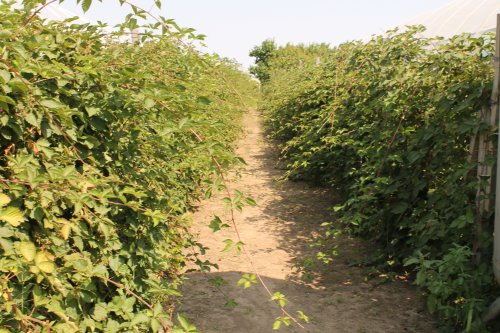
Berry ripening period
Despite the late flowering, the Loch Tei blackberry begins to sing in the southern regions in mid-June, in the middle lane 10-14 days later. Fruiting continues until the end of July. In terms of yield, the hybrid left behind even such popular varieties as Thornfree and Loch Ness.
Landing technology and features
Although blackberries are considered an unpretentious plant, in order for them to delight with berries, you need to follow agricultural techniques, find a suitable site for the garden, and place plants on it correctly.
Choosing a healthy and strong seedling
For blackberries, it is better to go to a special nursery in order to purchase exactly Loch Tay, and not another variety. You need to buy an annual bush no higher than 40 cm, its shoots should have a light brown skin without cracks.

Choosing a landing site
Blackberries take root well and bear fruit on neutral soils and soils with low acidity, where pharmaceutical and field chamomile and bindweed grow. A site for the Loch Tei hybrid should be allocated on the sunny side.
Preparing the soil and holes
Having chosen a place for a blackberry, 2 weeks before planting, you need to dig holes with a depth of no more than 40 cm every 2 meters. They pour half a bucket of humus into them, mixing it with ash, pour water over the holes.
Planting scheme and technique
After 10-14 days, the roots of the blackberry are straightened and placed in the ground. The bud of shrub growth is deepened into the ground by 30 mm, the soil is tamped, mulched with peat. At least 2.5 meters are left between the beds.
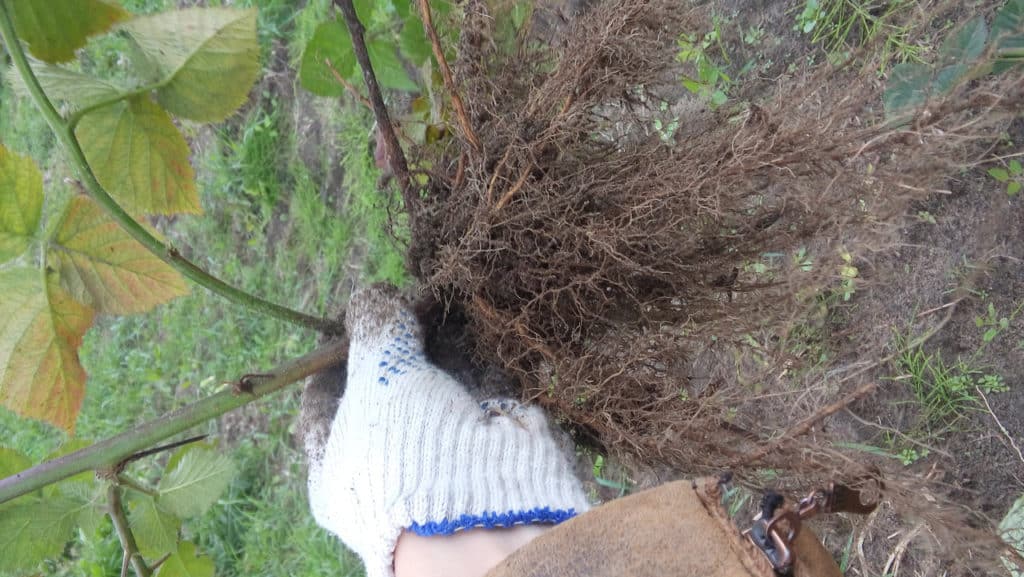
Bush care
The Loch Tei hybrid pleases the fruit growers who take care of it with the harvest of berries. Growing blackberries, in addition to adhering to agricultural technology, involves:
- Correct formation of the bush.
- Moisturizing.
- Top dressing.
We'll have to fight weeds, regularly loosen the soil, and in regions where there are severe frosts, even cover for the winter.
Watering
Loch Tei variety is not afraid of heat, withstands prolonged drought. For the berries to be juicy, the plant needs moisture. Drip irrigation helps to provide the required volume of water.
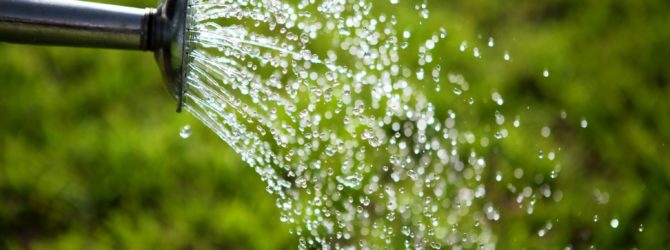
Water the blackberry more than 2 times a week and be sure to:
- when the seedling grows up to 15 cm;
- during flowering;
- late autumn.
On hot days, water can be run into the grooves. During the ripening period of the berries, excess moisture can lead to a deterioration in the taste of the fruit.
Top dressing
When planting blackberries, humus with wood ash is introduced, adult plants are fertilized every 2 or 3 years with mineral complexes and organic matter. Chicken droppings, rotted manure are used for feeding.
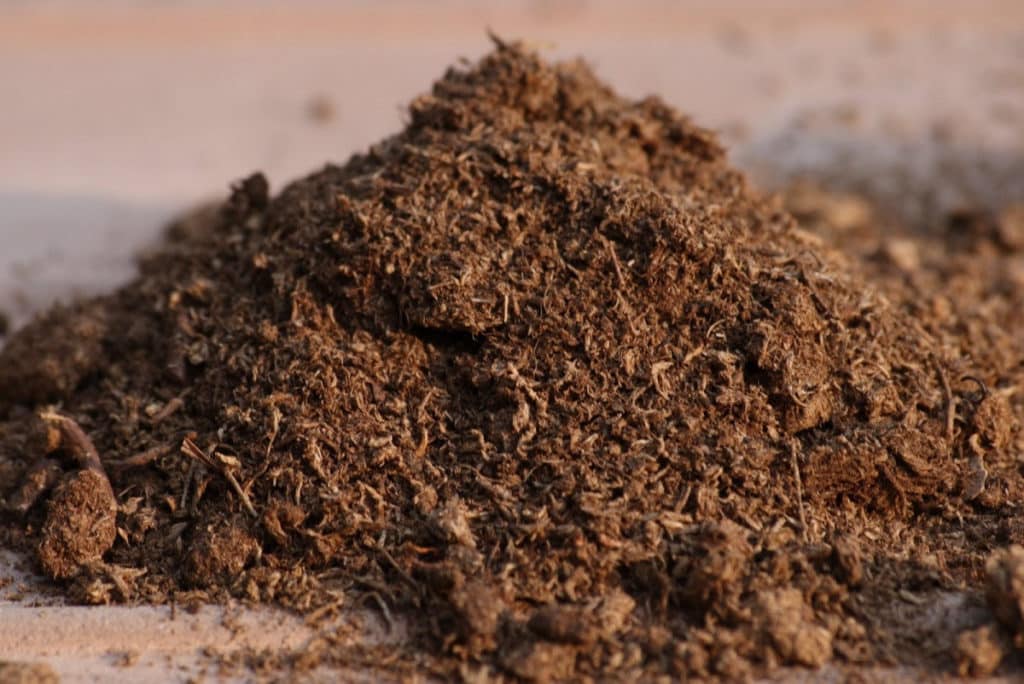
Pruning and shaping the bush
The first time the blackberry shoots are shortened during planting. During the period of active development of the Loch Tei variety, the apical bud is cut off when the stem height reaches 35 and 90 cm. Old non-fruiting branches are cut to ground level. An adult blackberry should have 20 shoots, with a large number of them, thinning is carried out. Areas frozen in winter are removed.
Support for the formation of a bush
Loch Tei produces a lot of berries in the place of inflorescences. To prevent the branches from bending under their weight, a trellis is installed. For this, pegs made of metal or wood are driven in at a distance of 5 m. Their height must be at least 2 meters. A wire is pulled between the posts, to which the shoots are attached.
Shelter for the winter
Loch Tei tolerates low temperatures, but freezes at -20. When grown in Siberia, in the Leningrad region and even in the Moscow region at the end of September, the branches are removed from the support and covered with needles, straw, dry leaves with a layer of 15 cm; there is no need to bury the bushes in a trench.
